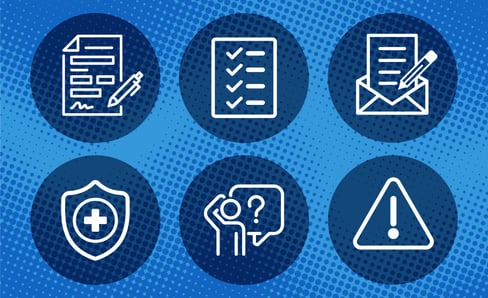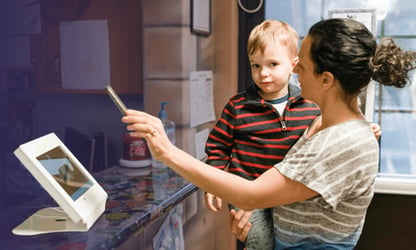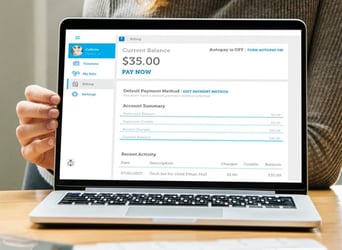
A high-quality early childhood curriculum is the cornerstone of effective preschool education. It lays the groundwork for lifelong learning, development and success. Educators who understand and implement thoughtful preschool curriculum strategies can significantly impact children’s academic, emotional and social growth.
Early childhood is a time of rapid brain development, when young learners absorb information at an astonishing rate. The curriculum they’re exposed to during these formative years can shape their cognitive skills and their character and worldview. When thoughtfully designed, a preschool curriculum cultivates a love of learning, fosters resilience and equips children with the tools they need to thrive in an ever-changing world. Moreover, it ensures equity by giving every child, regardless of background or ability, a strong start through consistent, developmentally appropriate experiences tailored to their needs. This same thoughtful approach could move into extended care programs, using fun curriculum additions for extended care to keep children engaged throughout the day.
What Is a Preschool Curriculum and Why Is It Important?

A preschool curriculum is a structured framework that guides educators in delivering learning experiences across multiple developmental domains. The importance of early childhood structured learning is that it ensures preschoolers engage in age-appropriate activities, promoting literacy, numeracy, emotional intelligence, creativity and more. Research shows that quality early childhood education leads to better outcomes in school readiness and long-term achievement. According to the National Association for the Education of Young Children (NAEYC), a well-designed curriculum also strengthens the connection between school and home, helping caregivers support learning beyond the classroom. Fostering a predictable, nurturing environment supports social and emotional regulation and builds a strong foundation for academic growth.
The preschool years are also crucial for developing executive functioning skills like impulse control, memory and flexible thinking — abilities linked to later success in academic and social contexts (Center on the Developing Child, Harvard University). A curriculum that purposefully integrates activities addressing these areas ensures children meet key milestones and develop holistically. As such, the importance of a preschool curriculum cannot be overstated — it is not just about learning letters and numbers, but about laying the groundwork for a lifetime of confident, capable learning. Similar executive function goals can be supported through group games for after-school care that build memory, focus and self-regulation in older children.
How Structured Learning Prepares Children for Kindergarten
Structured learning for preschoolers provides routine, fosters discipline and introduces children to foundational concepts through “scaffolding” (University of San Diego, 2025). It supports attention span development, language acquisition and social interaction, all of which are critical for kindergarten success. A kindergarten readiness curriculum ensures children meet milestones and build confidence.
Structured activities — such as circle time, story reading and guided play — help children practice listening, following directions and cooperating with peers. These routines mirror kindergarten expectations, easing the transition into formal education. In addition, exposure to engaging literacy and numeracy activities and concepts through structured lessons builds familiarity with symbols, patterns and problem-solving.
Research underscores the value of intentional early learning environments. The HighScope Perry Preschool Study and other longitudinal research have shown that early structured education improves cognitive development and social outcomes into adulthood. The importance of early childhood structured learning is demonstrated in differentiated instruction, allowing teachers to adjust lessons for varied learning styles and needs while maintaining clear goals. Educators can integrate weekly thematic units for preschool classrooms with after-school programs that complement daytime lessons to maintain continuity between preschool and after-school settings.
What Educators Will Learn from This Guide
This guide offers a comprehensive overview of preschool curriculum components, implementation strategies and the role tools like Vanco’s play in streamlining management. Whether you're a new teacher or a seasoned early childhood professional, you’ll find actionable insights to enhance your curriculum planning and delivery and valuable preschool teacher resources for curriculum planning.
Educators will also discover how to align their lesson plans with developmental milestones, adapt curriculum content for children with diverse needs and foster a balanced approach that integrates academic and socio-emotional learning. In addition to reviewing evidence-based practices, the guide provides practical examples and tips to support classroom implementation.
You'll also gain insight into the broader context of curriculum design, including how to evaluate effectiveness and engage families in the learning process. With the help of tools like Vanco, educators can simplify administrative tasks, track student progress and collaborate more effectively with peers. The goal of this guide is not just to inform, but to empower educators to create enriching, inclusive and joyful learning environments for every child. Educators working in preschool and after-school settings will benefit from quiet activities for school-age kids that help children recharge after a busy school day.
Table of Contents
- What Is a Preschool Curriculum and Why Is It Important?
- Key Components of a High-Quality Preschool Curriculum
- Different Types of Preschool Curricula
- How to Create a Balanced Preschool Curriculum
- Strategies for Implementing an Effective Preschool Curriculum
- How Vanco Supports Preschool Curriculum Implementation
- FAQs
- Conclusion
- Simplify Preschool Management with 100+ Free Printable Templates!
Key Components of a High-Quality Preschool Curriculum
Language and Literacy Development
Building Early Reading and Writing Skills
Teaching preschoolers foundational skills begins with intentional language activities. These include storytelling, guided reading and letter recognition. Early exposure to books and writing tools helps develop vocabulary and comprehension.
Phonics, Storytelling and Interactive Reading Activities
Phonics-based games, dramatic readings and retelling stories help build phonological awareness. Educators can use these engaging literacy and numeracy activities and writing activities from Vanco to enhance engagement. Incorporating the Pre-K Dolch Sight Word List is another effective early learning strategy for educators.
Mathematics and Numeracy Skills
Hands-On Counting and Number Recognition Activities
Young children learn numeracy best through play. Educators should include manipulatives, counting songs and math centers. Explore these math activities for creative classroom activities for preschoolers.
Introducing Basic Problem-Solving and Logic
Puzzles, sorting tasks and games that involve matching or sequencing nurture logical thinking. These are integral parts of the best preschool curriculum programs.
Science and Exploration
Encouraging Curiosity Through Nature-Based Learning
Observing bugs, planting seeds and discussing weather conditions ignite scientific inquiry. Preschoolers benefit from simple experiments and nature walks.
Simple STEM Activities for Preschoolers
Science, technology, engineering and math (STEM) projects such as sink-or-float experiments and building with blocks introduce scientific concepts. They support cognitive development through hands-on learning.
Social-Emotional Learning (SEL)
Teaching Empathy, Cooperation and Self-Regulation
Activities like group games and conflict-resolution stories promote SEL. Teaching children how to identify emotions and respond appropriately fosters strong interpersonal skills.
Role-Playing and Group Activities for Emotional Development
Dramatic play and guided social scenarios help children understand relationships. SEL is a key element in a holistic approach to preschool education.
Fine and Gross Motor Development
Activities That Strengthen Small and Large Muscle Skills
From threading beads to climbing playground structures, children need activities that develop coordination. Motor development ties closely to academic and life skills.
The Importance of Movement in Early Childhood Learning
Regular movement breaks, yoga and dance encourage concentration and physical health. Teachers can embed movement into transitions and circle time.
Creative Arts and Music
Incorporating Painting, Music and Dramatic Play
Art and music allow children to express themselves and process learning and enhance cognitive and emotional development. Refer to Vanco’s guides on preschool craft ideas, circle time songs and music and movement activities.
How Artistic Expression Benefits Early Development
Artistic activities stimulate imagination and problem-solving. They also improve fine motor skills and build cultural awareness.
Play-Based Learning and Hands-On Activities
The Role of Play in Cognitive and Social Development
Play-based preschool lesson plans support imagination, self-expression and experimentation. They encourage intrinsic motivation to learn. Educators can use creative games for after-school leaders to extend this play-based approach into aftercare hours, encouraging continued social and cognitive development.
Balancing Structured Lessons with Free Play
The best preschool curriculum programs balance guided instruction with unstructured time. Both are essential for comprehensive growth.
Different Types of Preschool Curricula
Understanding Various Curriculum Models
Preschool programs may follow one of several well-established curriculum models, each rooted in a unique educational philosophy. Selecting the right holistic approach to preschool education depends on a school’s values, teaching staff and the developmental goals for children. For programs that combine academic and recreational goals, incorporating the best after-school activities for mixed-age groups ensures continuity and age-appropriate challenges.
Play-Based Curriculum
A play-based curriculum embraces the idea that children learn best when actively engaged. Preschoolers make sense of the world around them through activities like building, dramatic play, sensory exploration and outdoor discovery. This approach fosters curiosity, creativity and problem-solving skills while developing foundational academic and social abilities in a natural, joyful way.
Montessori
The Montessori curriculum emphasizes self-directed learning through hands-on activities and sensory-based materials. Children choose their tasks within a carefully prepared environment, encouraging independence, concentration and self-motivation. The educator's role is to guide rather than instruct.
Reggio Emilia
Rooted in community and collaboration, Reggio Emilia encourages children to explore topics that interest them through projects. The environment is considered the "third teacher," and learning is documented through photographs and portfolios. Creativity and expression are central to this model.
Waldorf
Waldorf education centers on imagination and routine. Activities follow a predictable rhythm and focus heavily on storytelling, artistic expression and nature-based play. Technology is minimized and learning is holistic, addressing head, heart and hands.
Academic-Focused Preschool Programs
Academic-focused preschool programs offer structured learning experiences designed to prepare young children for the transition to kindergarten. These programs emphasize early literacy, numeracy and cognitive skills through teacher-led instruction and intentional activities. By introducing children to routines, classroom behavior expectations and teaching preschoolers foundational skills and academic concepts, these programs build the confidence children need for success through a kindergarten readiness curriculum.
How to Create a Balanced Preschool Curriculum
The best preschool curriculum programs begin with a deep understanding of child development and key learning milestones. Young children grow at different rates across cognitive, social, emotional and physical domains, so educators must align early learning activities with these developmental stages. For instance, toddlers begin to develop symbolic thinking, while older preschoolers start forming early literacy and numeracy concepts. Awareness of and knowing how to track preschool learning milestones — like language acquisition, impulse control and fine motor coordination — helps teachers select age-appropriate materials and avoid over- or under-challenging children. This developmental grounding ensures that the curriculum nurtures the whole child, fostering growth through engaging, achievable experiences.
Creating a balanced daily schedule is equally important. Preschoolers thrive in environments with predictable routines that still leave room for exploration and creativity. A flexible schedule might include morning circle time, guided learning blocks, creative arts, outdoor play and quiet rest periods. Mixing large-group, small-group and individual activities allows children with different learning styles to thrive.
Flexibility enables educators to follow children’s interests while staying anchored in learning objectives. Importantly, adapting the curriculum to meet diverse needs — whether supporting English language learners, children with developmental delays or advanced learners — ensures inclusivity. This might mean modifying instructions, providing sensory tools or using visual supports. Outdoor games for elementary students can also be adapted to preschool curriculum to support physical development and encourage active exploration. A well-balanced preschool curriculum offers consistency, adaptability and opportunities for every child to learn and shine.
Strategies for Implementing an Effective Preschool Curriculum
Even the most thoughtful curriculum requires strategic implementation. To ensure effective delivery:
- Provide professional development and ongoing training for teachers.
- Set clear goals and assessment methods.
- Use classroom observation to evaluate curriculum effectiveness.
- Foster collaboration among staff to align lesson planning and classroom routines.
- Involve families through communication and shared activities.
Consistency and structure improve student outcomes, but so does flexibility. Empower teachers to adapt based on student needs, interests and behavior. For educators managing both school-day and extended-care programming, aftercare enrichment ideas can provide fresh inspiration for afternoon activities. Using indoor crafts and experiments for kids is an excellent way to blend academic learning with fun, especially during rainy-day or indoor sessions.
Reflective teaching practices are also important. Encourage educators to journal or discuss what worked, what didn’t and why. This promotes continuous improvement. Another essential early learning strategy for educators is creating a supportive environment where children feel safe, heard and valued. The physical space should be inviting, organized and filled with accessible learning materials. Teachers should also use inclusive language and culturally responsive materials that reflect the backgrounds of all children. Finally, integrating technology thoughtfully, such as digital portfolios or interactive learning tools, can enhance instruction and documentation without replacing hands-on, relational learning.
How Vanco Supports Preschool Curriculum Implementation

Vanco offers comprehensive tools to simplify preschool program management, giving educators more time to focus on curriculum delivery. Features include:
- Tuition collection and automated billing
- Communication tools for family engagement
- Scheduling and attendance tracking
- Access to a library of curriculum-aligned activity ideas and templates
With Vanco, educators can streamline administrative tasks and ensure their curriculum is implemented smoothly and effectively. Educators can also use Vanco to plan team-building activities for young learners that enhance collaboration and social learning across age groups. Budget-friendly after-school projects are available through Vanco’s resource library, helping programs develop creative classroom activities for preschoolers without overspending.
Vanco has created 100+ downloadable templates for teaching, administrative functions and more. Access them at the end of this post.
FAQs
How do I choose the best curriculum for my preschool?
Choose a curriculum that matches your educational philosophy, supports diverse learners and aligns with family expectations. Blending multiple approaches is also effective.
What if my preschool has limited resources?
Focus on play-based preschool lesson plans, learning with simple materials and common thematic units for preschool classrooms. Many practical activities require minimal cost — nature walks, storytelling and open-ended play are great examples.
Can I customize an existing curriculum?
Yes! Many programs adapt curricula to meet their students’ cultural, developmental and individual needs.
How do I know if the curriculum is working?
Use child observations and parent feedback and ensure you know how to track preschool learning milestones. Assessment should be ongoing and formative.
Conclusion
A high-quality preschool curriculum is more than a checklist of lessons — it’s a pathway to nurturing confident, curious learners. By balancing core components like literacy, numeracy, SEL, play and using the right tools and strategies, educators can teach preschoolers foundational skills that are necessary for every child’s future.
Simplify Preschool Management with 100+ Free Printable Templates!
Looking for an easier way to manage your preschool program? Download Vanco’s free printable preschool templates to streamline lesson planning, attendance, communication and more. With over 100 templates designed for early childhood educators, you can save time and stay organized while delivering a top-tier curriculum.

We know providers like yourself are busy. That's why we made dozens of templates to help you manage the various aspects of your organization. From billing and invoicing to marketing materials, we have it all. Download all 100+ today!











